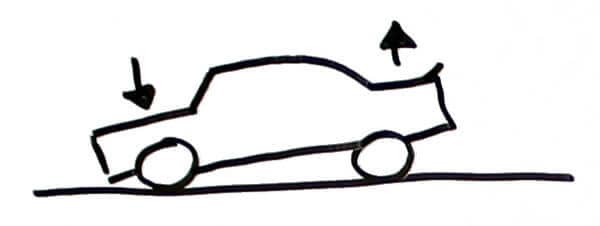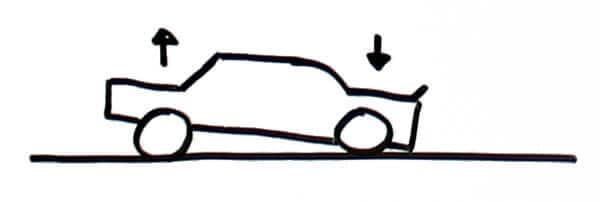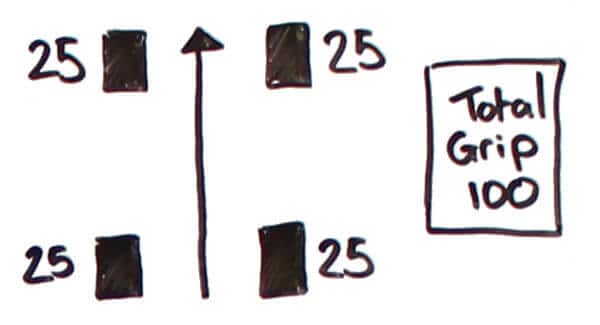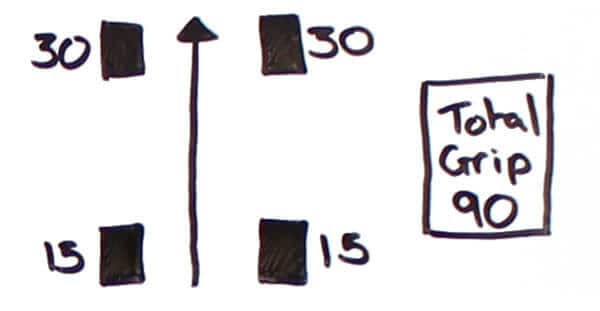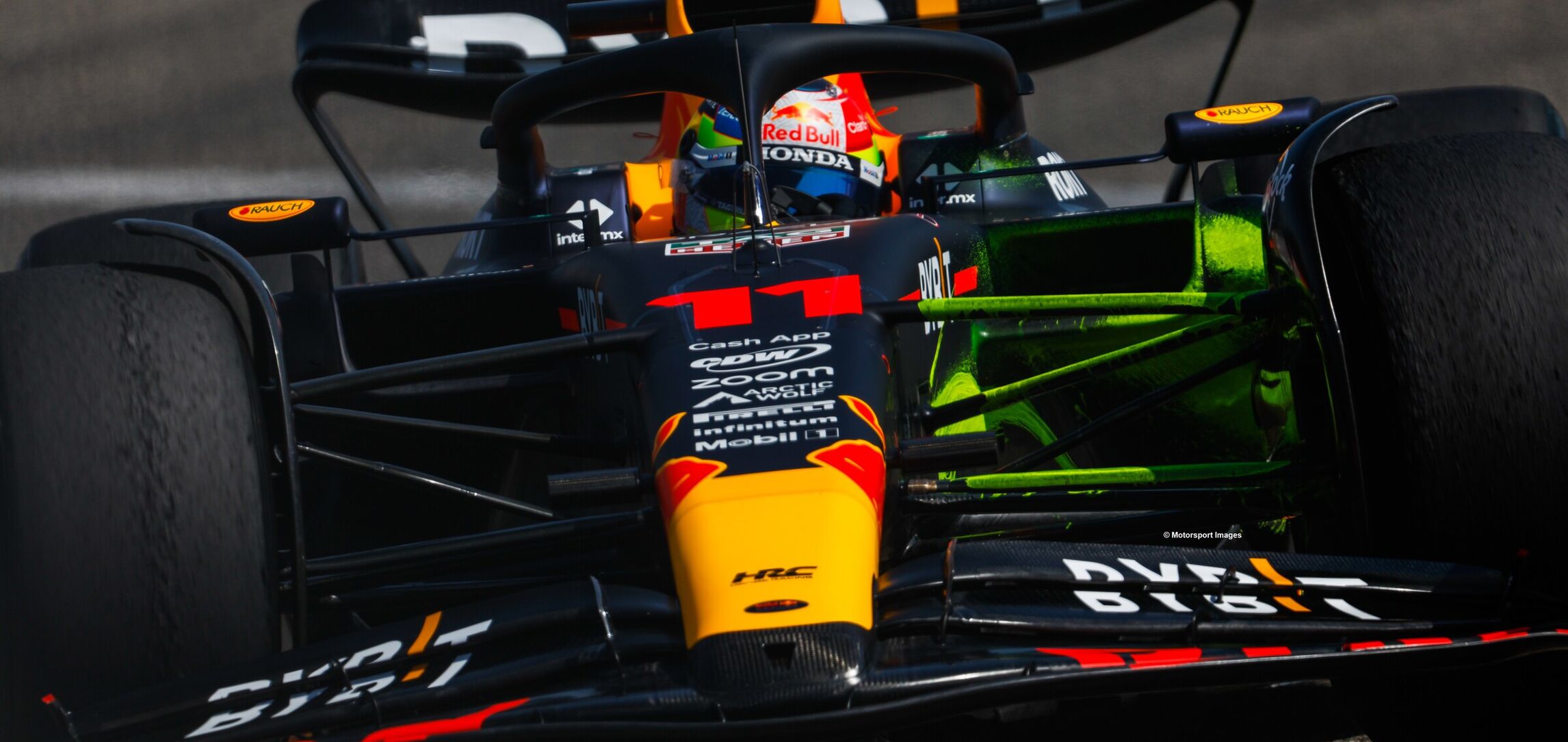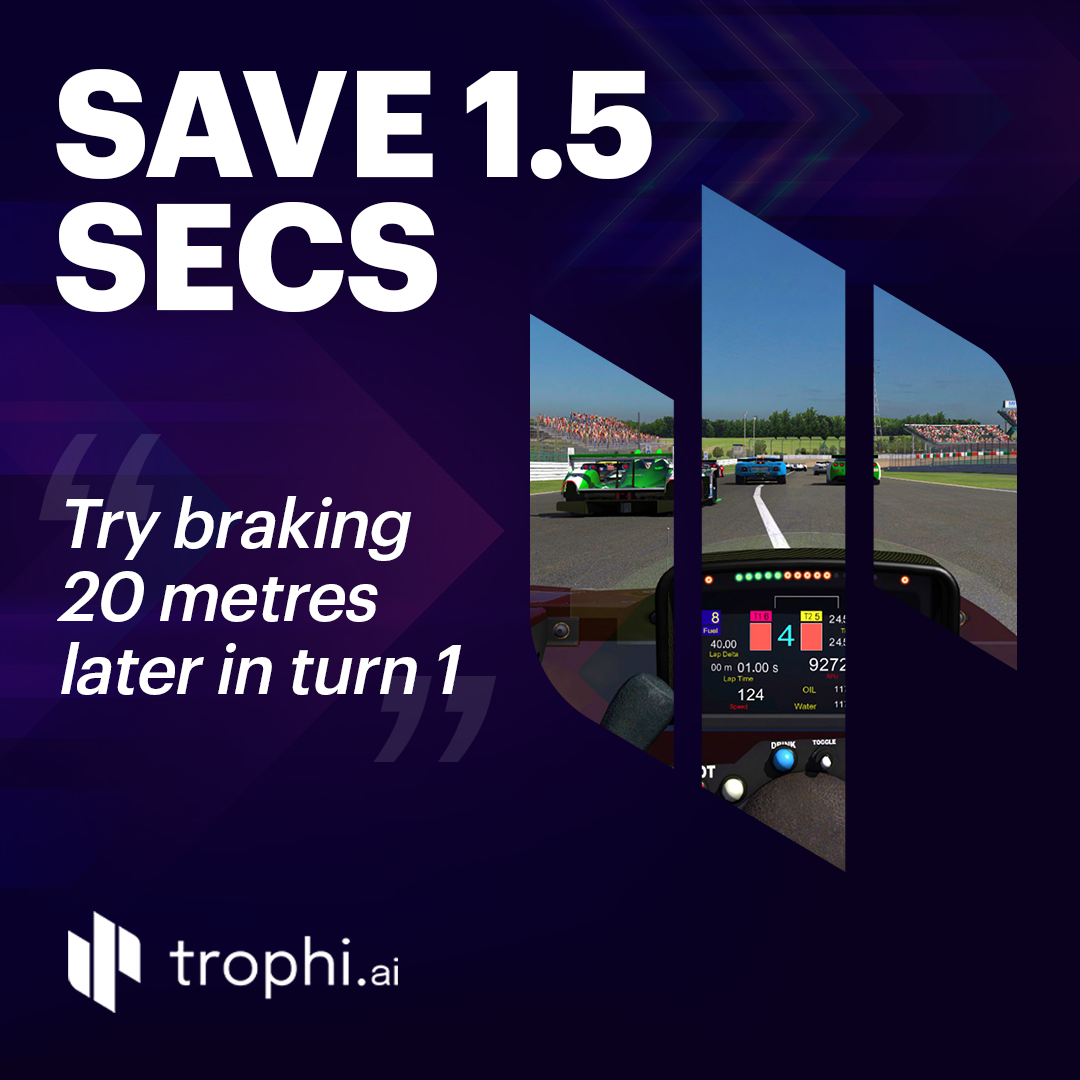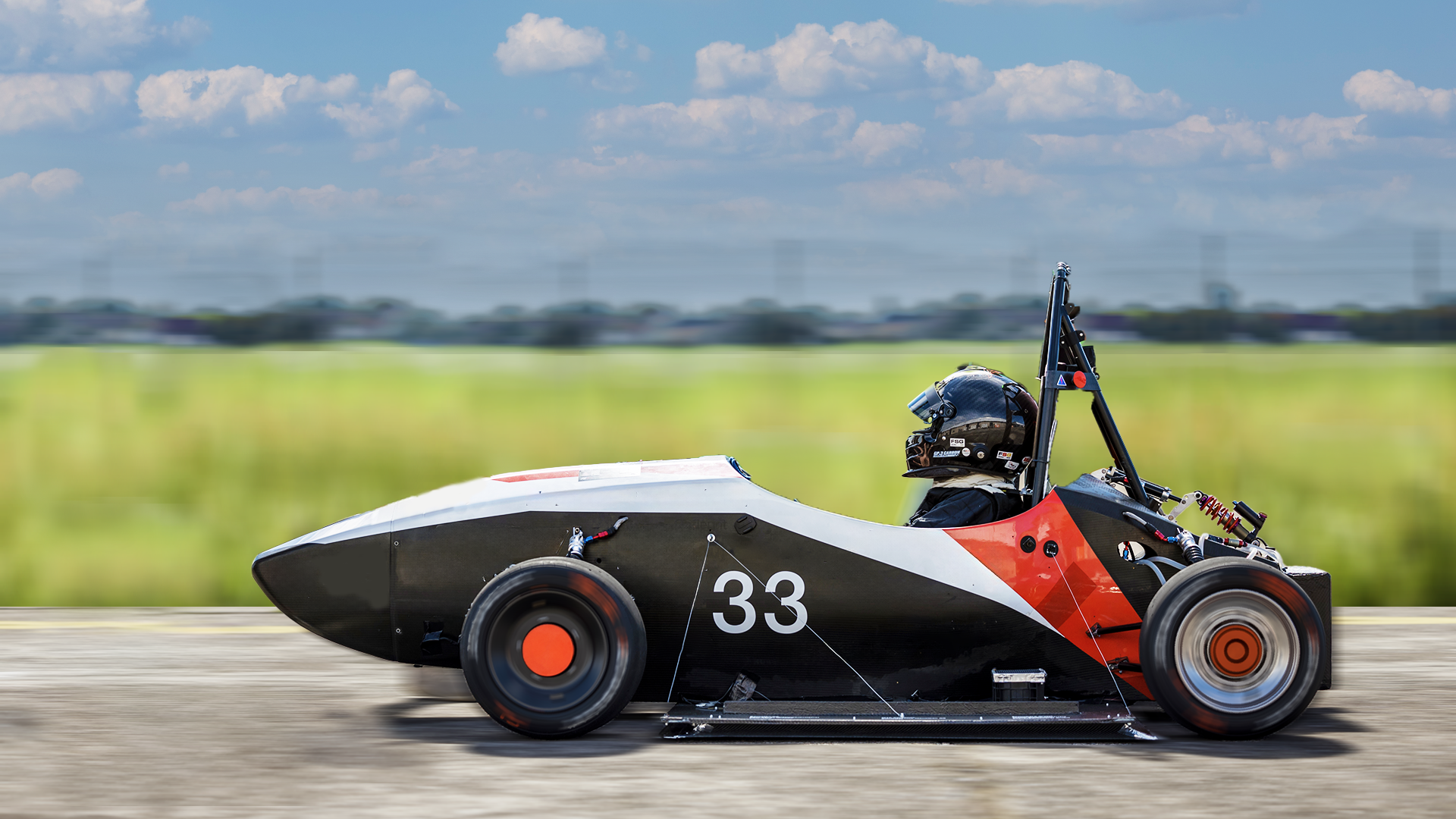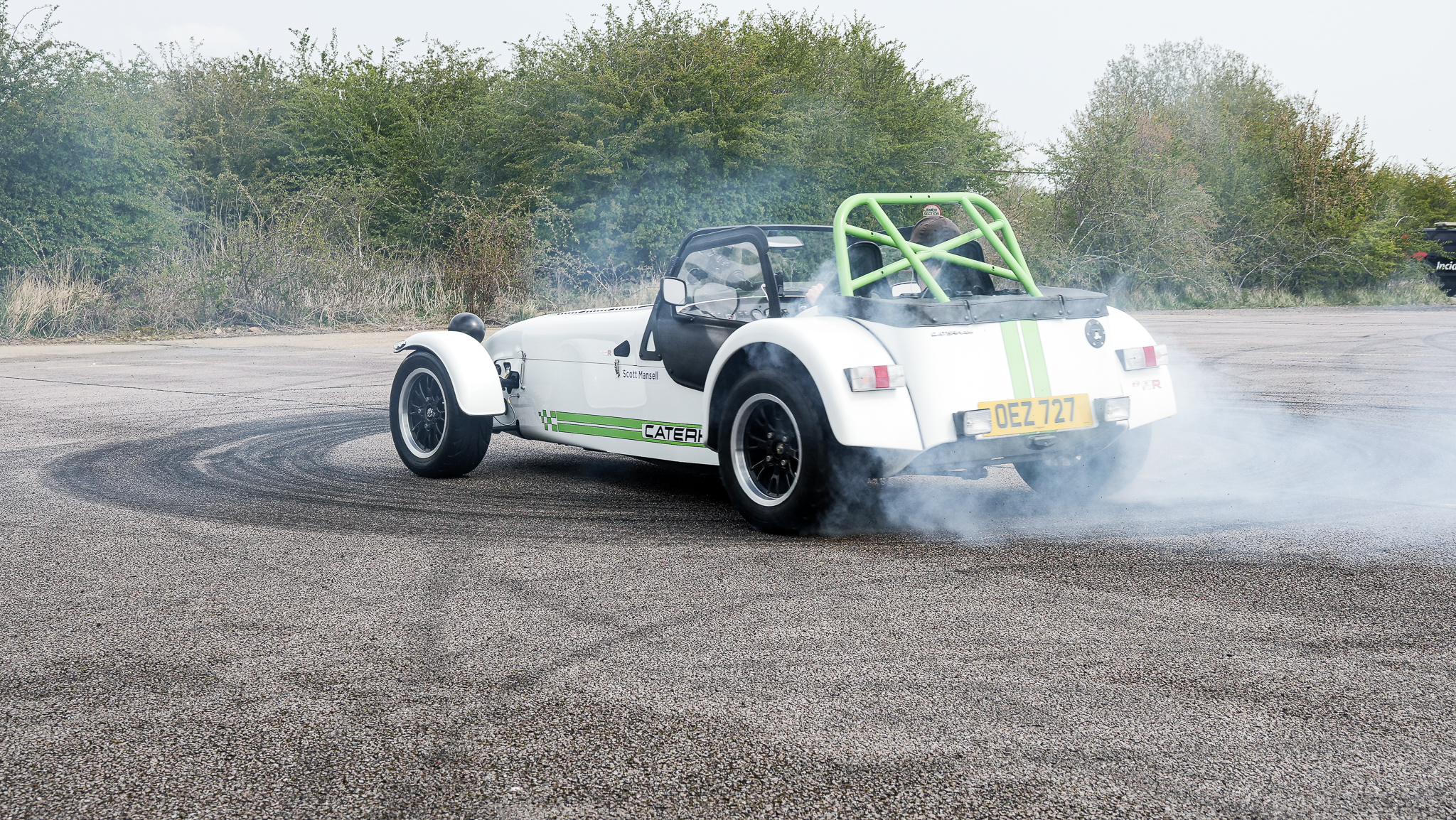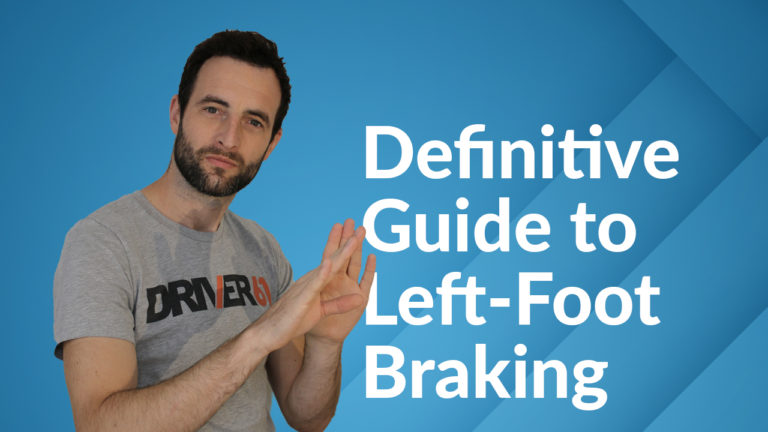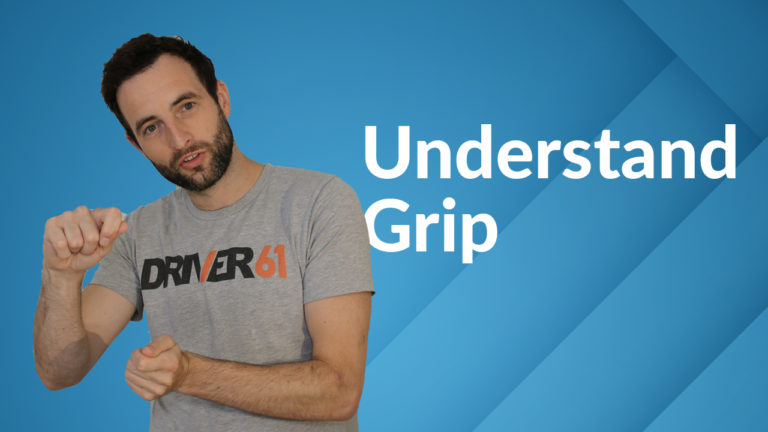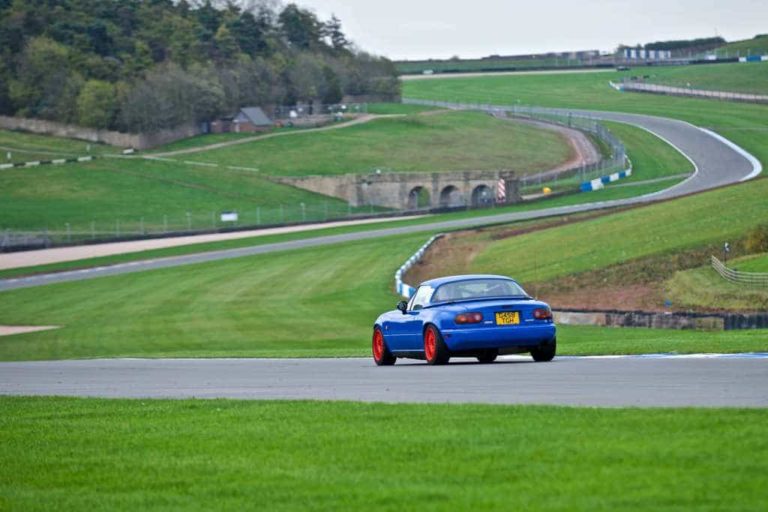What does Weight Transfer Mean?
This week we’re investigating weight transfer – a fundamental topic to understand if you want to be fast on track.
Understand weight transfer and you’ll begin to be conscious of how your car’s pitch is changing through each phase of a corner, and more importantly, you’ll know how to get the most from it.
This weight transfer tutorial will cover:
- What is weight transfer?
- How weight transfer affects grip
- How to balance your car
- Manipulating weight transfer
What is Weight Transfer?
Weight transfer happens when a car’s weight moves around its roll centre when braking, turning or accelerating. When the car moves in one of these directions, the car’s weight moves in the opposite direction and compresses the suspension in this area.
As we saw in the last article about grip, one thing that affects the tyre’s ability to hold the road is the vertical load that’s put through it – the more weight a tyre has over it, the more grip it has.
Due to the car’s suspension, the weight over each tyre – when the car is braking, turning or accelerating – is constantly changing. Clearly, the total weight of the car isn’t shifting, but the distribution of that weight is.
The image below shows a car in its natural state – it could be moving along a race circuit, but it’s travelling at a constant speed and in a straight line.
To help explain things more easily, we’ll say that the weight over each tyre of this example car is even – imagine a bathroom scale under each of the four tyres and they’re all reading the same. This is not true for most race cars, as one end will usually be heavier, but the simplicity helps our explanation.
Once we start to take the car into and through a corner, things become more interesting. There are a few simple terms we need to understand when we’re talking about weight transfer and circuit driving in general. They are:
- Dive
- Roll
- Squat
Imagine we’re approaching the corner and we begin to brake. The front suspension is compressed and we feel the front of the car go down – this is called dive – and is shown in the image below.
As we come off the brakes and turn the car into the corner, the car’s weight begins to move backwards from the front, and when the car turns, towards the outside tyres: this is what we call roll. As the car moves into the apex and is at a constant speed for a short while, the weight will be evenly distributed (between the front and rear tyres) on one side of the car.
Then, as we’re coming out of the corner and straightening the car, the weight will transfer away from the outside, and as we begin to accelerate, will move towards an even spread across the rear axle. You can feel this movement whenever you accelerate in your car; it’s called squat.
How Weight Transfer Affects Grip
So why do we need to know how a car’s weight moves around when we’re driving on track? Well, it’s crucial because if you remember our article on grip, the more vertical load a tyre has on it, the more grip it has.
So, to be clear the more weight that we have over one area of the car – as it dives, rolls and squats – the more grip that region will have. As you can imagine, as the car’s weight moves around during different points of the corner, the grip is also moving. This sounds like it could be an issue, but fast drivers use it to their advantage.
One thing to note is that the transfer of weight (and grip) to one area of the car (e.g. the front tyres) will take away grip from the opposite area (e.g. the rear tyres).
To better understand this, let’s take a look at a few diagrams that will show the amount of grip each tyre has at each point in the corner as weight transfers.
For the sake of keeping things simple, I’m going to give each tyre a maximum grip level of 25, therefore giving the car a total grip level of 100.
In the diagram below, you can see that the car is travelling towards a corner at terminal velocity (no acceleration, deceleration or turning), with a balanced platform. Each tyre has an equal vertical load on it, with a value of 25.
Next up, we’ll be getting on the brakes to decelerate the car to the correct entry speed for this corner. The diagram below shows the car in dive. Notice that the front tyres now have a grip level of 30 each, but the rears only have 15.
If we were to turn into the corner with the car in this pitch, we would be limited by rear grip. That is to say; the rear would break traction long before the front and so the grip at the rear of the car limits the speed we can take into the corner.
Therefore, it’s a better technique to smoothly release the brakes so that the front of the car rises and balances the platform (more of a 25, 25, 25, 25 split) before we turn into the corner. Now the car has 10 more units of grip at the rear and we can enter the corner faster.
The next diagram shows the point at which the car is coming into the apex – the platform is even front to rear, but much of the weight (and grip) has rolled over to the left side of the car as we’re turning right.
You can notice that the inside of the car is mostly unloaded and isn’t giving us much grip. This is why it’s possible to run over curbs (sometimes more) and get away with it – because it’s mainly the outside tyres that are helping us around the corner.
After we’ve reached the apex, we’re beginning to open up the car’s steering and get back on the throttle. As we do this, the car’s weight will move from one side to the rear of the car, as you can see in the diagram below.
Notice that now the rear tyres have the majority of the grip, as the car’s squatting. A common handling problem is what we call ‘throttle-on understeer’ which is where the front slides as you exit a corner.
In the diagram, the rear tyres have a grip level of 30, but the fronts only have 15. The balance is off, and the front would be grip limited – the end of the car that would break traction first.
This type of understeer is pretty much impossible to resolve with driving technique, but could be resolved with a set-up change – something that we’re going to go into to towards the end of this series.
Maintaining Balance
So now you can understand how grip moves around the car as we move through a corner. What you may have noticed is that the total grip when the car is braking, turning or accelerating, is less that when it’s in a perfectly balanced platform.
When the car was moving at a constant speed without turning the total grip level was 100 (25 + 25 + 25 +25), but when the car was transferring weight it was only 90 (30 + 30+ 15 +15). So you can see that whenever we have any weight transfer, the car loses overall grip.
Therefore, when we’re driving on track, we want to induce as little weight transfer as possible so that we keep total grip as high as possible. And how do we do this? As I’ve said many times already, we must be smooth.
Imagine turning the steering wheel sharply in your road car. The car’s weight will roll to the outside quickly (and it won’t feel very stable). If you do this, you’re ‘throwing’ the car’s weight onto the outside suspension and you’ll cause a spike in weight transfer – significantly increasing the likeliness of the outside tyres breaking traction.
Think of the scenario of pushing someone over. Push them hard and fast and they’re likely to fall, push them slow, but gradually increasing the pressure and they’ll probably remain standing.
Make your inputs as smooth as possible. You’ll then get less weight transfer and so increase the amount of grip available to brake, turn and accelerate – and increase the speed you can take through the corner.
Manipulating Weight Transfer
If you have a poorly handling car – for whatever reason – and its balance is off, it’s possible to change your driving technique to improve the situation.
For example, imagine that your car is feeling light at the rear as you turn into a corner. The car feels like it’s going to swap ends on you as soon as you soon as you begin to turn towards the apex.
Well, let’s think about what’s happening:
- You apply the brakes
- The car dives at the front (weight and grip moves forwards, away from the rear)
- You begin to release the brakes as you’re coming into the corner
- You turn the car in towards the apex
- The rear begins to slide
In this situation, the rear grip is the limiting factor – the end of the car that is restricting you from going faster around the corner. So what do we need to do? We need to transfer some grip to the rear and so move it away from the front.
To move grip to the rear of the car (and remove grip from the front), we need to begin to release the brakes a little earlier, so that the front rises sooner and transfers the weight rearwards. This means that the rear of the car will have more weight and grip. The car will be better balanced and we can go through the corner faster.
This is just one example of how a good driver can manipulate a car’s balance using weight transfer, we’ll go into more detail in future tutorials.
Understanding weight transfer is crucial to fast circuit driving as it enables you to become conscious of how the car’s balance is changing around each corner. Once you can understand how the car’s platform is sitting, you can figure out what the limiting factor is – what’s stopping you from going faster – and alter you driving style appropriately. If you can do that, then you’re on your way to being a great circuit driver.
I hope you enjoyed this article, if you did please share it with your driving friends and as always if you have any questions, please get in touch.


